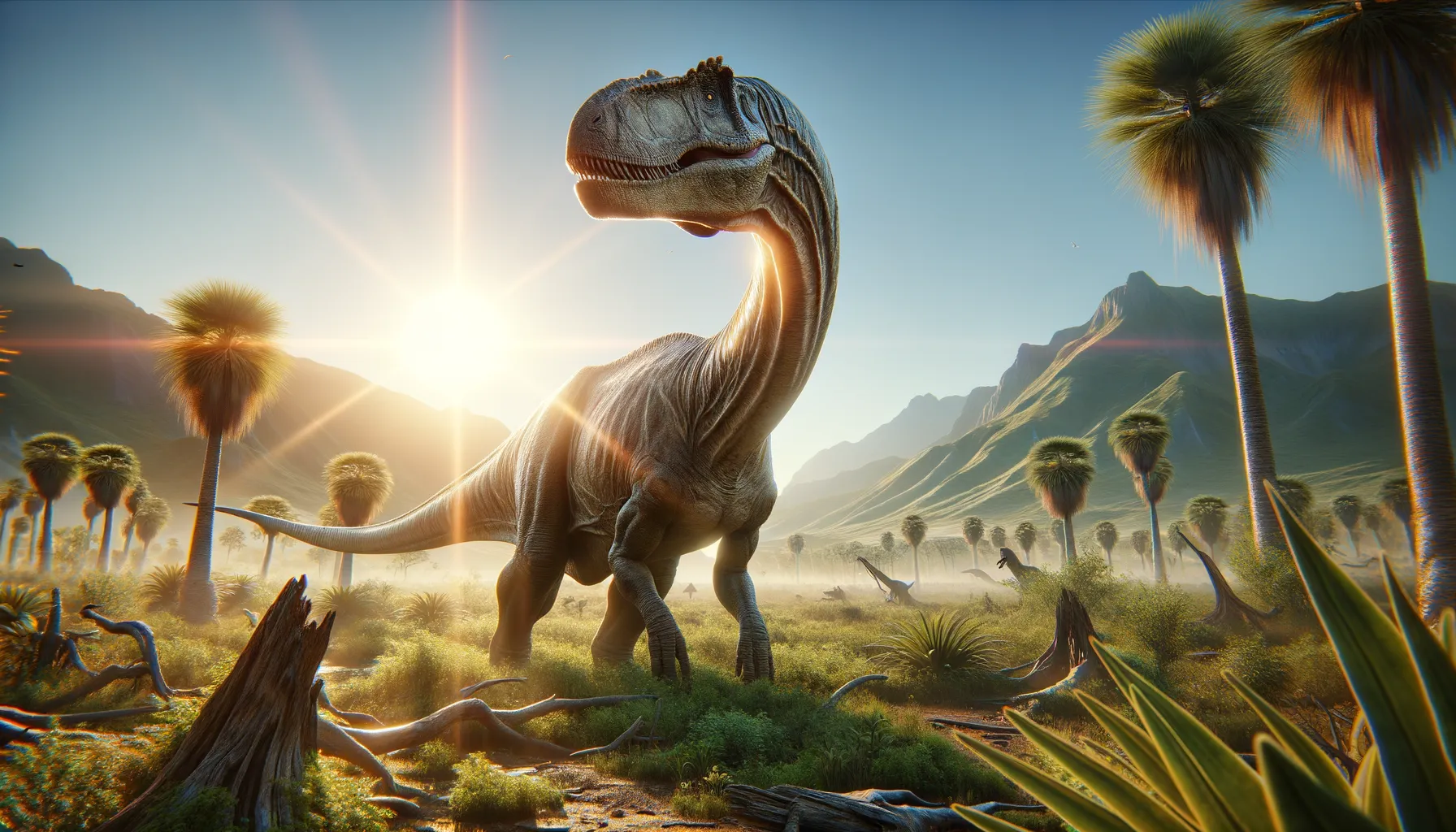
Likhoelesaurus
Majestic grazer of the Jurassic forests.
Period
Jurassic
Length
Measured about 6 meters in length.
Height
Stood approximately 2 meters tall at the hip.
Weight
Estimated to weigh around 500 kilograms.
Likhoelesaurus was a large herbivorous dinosaur that roamed the ancient landscapes of what is now Southern Africa. This dinosaur is known for its robust build and long neck, which allowed it to reach vegetation that other animals could not. It lived during the Jurassic period, a time when many massive dinosaur species thrived.
Diet
Likhoelesaurus primarily fed on a variety of plants. Its diet likely included leaves, shrubs, and possibly fruits that were abundant in its Jurassic habitat.
Hunting
As a herbivore, Likhoelesaurus did not engage in hunting for food. Instead, it foraged for plant material in dense forests and open plains.
Environmental challenges
During its time, Likhoelesaurus faced challenges such as changing climates and shifting vegetation zones. It had to adapt to seasonal changes in food availability. Predators also posed a threat, requiring constant vigilance and group cooperation for survival.
Speed
Had moderate speed likely for its size.
Lifespan
Could live for several decades.
First discovery
Discovered in 1991 by paleontologists in Lesotho.
Fun Facts
- Likhoelesaurus was a dinosaur from the Late Jurassic period, approximately 150 million years ago.
- This dinosaur is named after the Likhoele Mountain range, where its fossils were first discovered in Lesotho.
- Likhoelesaurus was likely a herbivore, meaning it mainly fed on plants and vegetation.
- It probably lived in a warm, tropical environment that covered much of the region during its time.
- The discovery of Likhoelesaurus helps scientists understand the diversity of dinosaur life in southern Africa.
- Despite its ancient existence, the bones of Likhoelesaurus have helped paleontologists learn about the ecosystem of the Jurassic period.
- Likhoelesaurus adds to the rich tapestry of dinosaurs that roamed Gondwana, a supercontinent from millions of years ago.
Growth and Development
Young Likhoelesaurus were likely cared for by their parents or social groups. Growth rates were steady, allowing them to reach large sizes necessary for defense against predators. Proper nutrition was crucial for healthy development.
Habitat
Likhoelesaurus inhabited lush forests and open plains where vegetation was plentiful. The climate was warm, with occasional rains fostering abundant plant life. The region's rivers and lakes provided essential water resources.
Interaction with other species
Likhoelesaurus coexisted with various other dinosaur species, including both herbivores and carnivores. It likely formed herds for protection against predators. Cooperative behaviors among individuals might have included sharing feeding grounds and alerting to threats.
Natural lifespan
Naturally, it lived several decades, reaching its full potential through strong social bonds.
Reproduction
Likhoelesaurus reproduced by laying eggs in carefully-selected nesting sites. Parental care, such as guarding nests, was probably present, maximizing offspring survival. Hatchlings were precocial, meaning they could move and feed soon after birth.
Social behaviour
Likhoelesaurus was likely a social animal, forming herds for mutual defense. Communication through vocalizations and body language might have played a role in maintaining group cohesion. Hierarchies were likely present to reduce conflict over resources.
Fossil locations
Fossil remains of Likhoelesaurus were primarily found in the highlands of Lesotho. These discoveries have provided valuable insights into the environmental conditions and ecosystems of the Jurassic period in this region. Further excavations continue to uncover more about its distribution.
